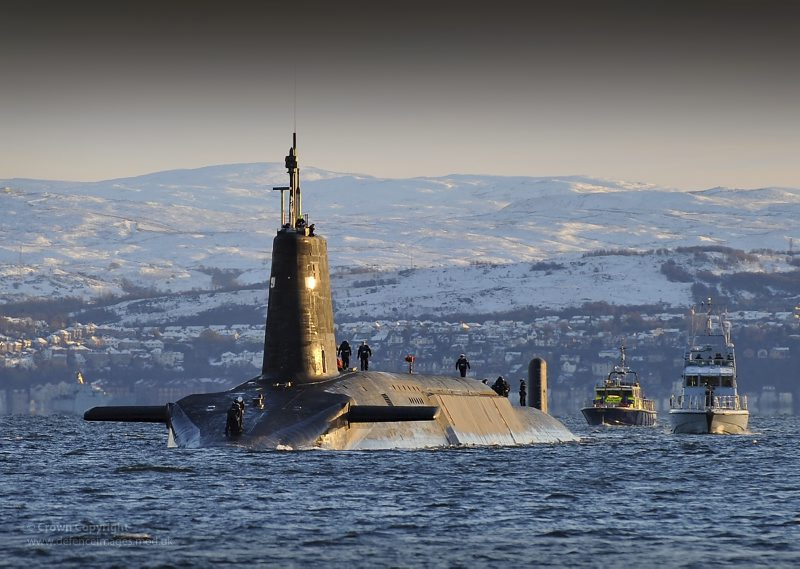By: Kyle R. Brady

With yet another[1] illegal underground nuclear weapons test[2], North Korea has again flaunted the international community’s attempt to control what is quite arguably a rogue and/or failed state. A key difference in this test[3], however, is not its apparent yield[4] but, instead, the claim that this is part of a miniaturization process intended to produce nuclear warheads for internationally deployable missiles[5]. Despite well-regarded international treaties on the development of nuclear weapons programs and the testing of nuclear weapons, extraordinarily heavy international sanctions on this already-struggling state, and increasingly irritable neighbor states - namely, South Korea[6], Japan[7], Russia[8], and China[9] - North Korea seems intent on this nuclear path. The question remaining is why? The answer may be found in the minds of terrorists.
In developing nuclear weapons designed to thwart early detection and protection measures by other states[10], North Korea seems to be essentially demonstrating the seriousness of their program while simultaneously broadcasting their flexible nuclear weapons delivery mechanisms. If their claims regarding physical size, delivery vehicle, and detection-/destruction-avoidance abilities are true - as much of the analysis is suggesting - then one way to frame such a test is as “a sales pitch to other rogue states.”[11] The rogue states who may have been targeted for future sales deeply desire nuclear weapons and the cachet that comes with being a nuclear state, but lack the political will, financial means, or technological ability to develop them internally and in secret - an outside source is, therefore, required. This remains a highly plausible motivation, since it would inject desperately needed cash into the North Korean economy, continue to project the North Korean state as strong and militant, and avoid any entanglements or negotiations with their long list of stated enemies.
However, if such a test was designed to attract the purchasing power of rogue states, then it seems even more likely that terror actors were targeted, as well.
Rogue states, as their name suggests, have an inherent flaw in their operations that non-state terror actors do not: physical territory and state-run bureaucratic infrastructure. These two components of statehood make rogue states highly vulnerable to international sanctions and more conventional warfare, producing a sensitivity to the sentiment of the international community, even as the desires of this community may be eschewed. In contrast, terror actors lack these two components of statehood, among many others, which is part of what has made the suppression of large terrorist organizations so difficult. Without a territory to invade, formal trade to prevent, or official finances to freeze, terror actors are simply much more mobile and non-corporeal than states, even rogue ones; factors that correspondingly increase their interest in strategies and tactics otherwise impossible for a state to employ.
The nuclear ambitions of terrorists in the modern era are well documented, most recently including[12] the Islamic State[13]; the problem in all known acquisition attempts, however, was essentially a lack of viable products to purchase. Although some quantity of former Soviet nuclear material has disappeared over the years[14], logic dictates that such material would have explosively and catastrophically reappeared if it had fallen into the hands of terror actors. Furthermore, any nuclear states - both recognized and unrecognized - have inherent motivations to continue their nuclear weapons development programs and maintain their stockpiles, in part by ensuring these weapons are not placed into the hands of terrorists. Even unstable countries with questionable security practices, such as Pakistan[15], have no desire for nuclear weapons to be delivered to terror actors.
Enter North Korea.
With a long list of enemies that includes the most powerful states in the world, a failed economy, a people bound together by the sheer force of propaganda and fear, and a long-standing interest in cultivating international fears regarding its unpredictability, North Korea has nothing to lose from selling weapons on the black market[16] even if the ultimate buyers are terror actors. Whether these weapons are light arms, small arms, munitions, or nuclear does not matter to the North Korean regime - the all-important selling price is the only factor in this cash-starved state. If this motivational confluence is combined with a growing list of terror organizations and independent terror actors who have a defiant and remorseless dedication to their deadly cause, the sale of North Korean nuclear weapons to terror actors seems not only logical, but probable. This probability only increases when consideration is given to the apparent struggles of the Islamic State to maintain both its territory and its fighting force[17].
The conclusion that North Korean weapons programs may be seeking to connect with terror actors fundamentally changes the way in which the international community should view this rogue, failed state. The long-standing international policy of disapproving tolerance permissive of nuclear development and testing has now produced viable, and apparently adaptable nuclear weapons. Thus raising - once more - the spectre of enhanced terrorism. This is not to suggest that the infamous suitcase nukes[18] are of any real concern, but, rather, that the detonation of a nuclear warhead - of any size - in Baghdad, Damascus, Ankara, Cairo, or Tripoli would substantially change the worldwide understanding and fear of terrorism.
With the help of North Korea, this may now be a very real possibility.
Note: Any opinions expressed are directly and expressly the author’s own; they do not represent - unless stated - his employers (past, present, or future) or associated/affiliated institutions.
Kyle R. Brady is an imminent postgraduate student at King’s College London in the Department of War Studies, holds a Masters in Homeland Security from Pennsylvania State University, and has primary interests in terrorism, law enforcement, and contextualizing security concerns. Previously, he graduated with Departmental Honors from San Jose State University’s undergraduate Political Science program, where he focused on both international relations and political theory. All of Kyle’s work can be found online through http://docs.kyle-brady.com; he can be reached by email at [email protected] or, nominally, on Twitter as @KyleBradyOnline; and he occasionally blogs at http://blog.kyle-brady.com.
Online profiles:
Notes:
[1] “Timeline on North Korea’s Nuclear Program.” New York Times, November 20, 2014. http://www.nytimes.com/interactive/2014/11/20/world/asia/northkorea-timeline.html.
[2] Fifield, Anna. “Q&A: Everything You Need to Know about the North Korean Nuclear Test.” Washington Post, September 9, 2016. https://www.washingtonpost.com/news/worldviews/wp/2016/09/09/qa-everything-you-need-to-know-about-the-north-korean-nuclear-test/.
[3] Fifield, Anna. “North Korea Conducts Fifth Nuclear Test, Claims It Has Made Warheads with ‘higher Strike Power.’” Washington Post, September 9, 2016. https://www.washingtonpost.com/world/north-korea-conducts-fifth-nuclear-test-as-regime-celebrates-national-holiday/2016/09/08/9332c01d-6921-4fe3-8f68-c611dc59f5a9_story.html.
[4] Lewis, Jeffrey. “Nuclear Test No. 5: How North Korea’s Compares to Other Countries’.” Defense One, September 11, 2016. http://www.defenseone.com/ideas/2016/09/look-how-different-north-koreas-fifth-nuclear-test-other-countries/131427/.
[5] Fifield, Anna. “With Each Test, N. Korea Inches Closer to Being Able to Send a Nuclear-Tipped Missile to the U.S.” Washington Post, September 9, 2016. https://www.washingtonpost.com/world/with-each-test-n-korea-inches-closer-to-intercontinental-nuclear-capability/2016/09/09/b6823c0c-768e-11e6-9781-49e591781754_story.html.
[6] “North Korea Nuclear Test: South Would Reduce Pyongyang ‘to Ashes.’” BBC News, September 11, 2016. http://www.bbc.com/news/world-asia-37331852.
[7] Takenaka, Kiyoshi. “Japan’s Abe Says North Korea Nuclear Tests ‘Absolutely Unacceptable.’” Reuters, September 11, 2016. http://www.reuters.com/article/us-northkorea-nuclear-japan-idUSKCN11I059.
[8] Solovyov, Dmitry. “Russia Says North Korea’s Nuclear Test a Threat to Regional Security.” Reuters, September 9, 2016. http://in.reuters.com/article/northkorea-nuclear-russia-reaction-idINKCN11F17J.
[9] Merchant, Nomaan. “China Says It Can’t End North Korea Nuke Program on Its Own.” Washington Post, September 12, 2016. https://www.washingtonpost.com/world/asia_pacific/china-says-it-cant-end-north-korea-nuke-program-on-its-own/2016/09/12/5603bc16-78cd-11e6-8064-c1ddc8a724bb_story.html.
[10] Fifield, Anna. “These North Korean Missile Launches Are Adding up to Something Very Troubling.” Washington Post, September 9, 2016. https://www.washingtonpost.com/world/asia_pacific/these-north-korean-missile-launches-are-adding-up-to-something-very-troubling/2016/09/08/eae2c50a-743d-11e6-9781-49e591781754_story.html.
[11] Rathi, Akshat. “North Korea’s Nuclear Test Was a Sales Pitch to Other Rogue States.” Quartz, September 12, 2016. http://qz.com/778839/north-koreas-nuclear-test-was-a-sales-pitch-to-rogue-states-like-iran-syria-and-pakistan/.
[12] Cowell, Alan. “‘Low-Grade’ Nuclear Material Is Seized by Rebels in Iraq, U.N. Says.” New York Times, July 10, 2014. http://www.nytimes.com/2014/07/11/world/middleeast/iraq.html?_r=0.
[13] “Nuclear Smuggling Deals ‘Thwarted’ in Moldova.” BBC News, October 7, 2015. http://www.bbc.com/news/world-europe-34461732.
[14] Tirone, Jonathan. “Missing Nukes Fuel Terror Concern as Obama Drawn to Seoul.”Bloomberg, March 26, 2012. https://www.bloomberg.com/news/articles/2012-03-22/missing-nukes-fuel-terror-concern-as-seoul-meeting-draws-obama.
[15] Kerr, Paul K., and Mary Beth Nikitin. “Pakistan’s Nuclear Weapons.” Congressional Research Service, August 1, 2016. https://fas.org/sgp/crs/nuke/RL34248.pdf.
[16] “North Korea’s Shadowy Arms Trade.” The Guardian, July 17, 2013. https://www.theguardian.com/world/2013/jul/18/history-north-korea-arms-dealing.
[17] Witte, Griff, Sudarsan Raghavan, and James McAuley. “Flow of Foreign Fighters Plummets as Islamic State Loses Its Edge.” Washington Post, September 9, 2016. https://www.washingtonpost.com/world/europe/flow-of-foreign-fighters-plummets-as-isis-loses-its-edge/2016/09/09/ed3e0dda-751b-11e6-9781-49e591781754_story.html.
[18] “Suitcase Nukes? Probably a Myth.” NBC News, November 10, 2007. http://www.nbcnews.com/id/21723693/ns/us_news-security/t/suitcase-nuclear-weapons-probably-myth/.


